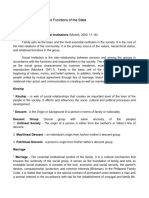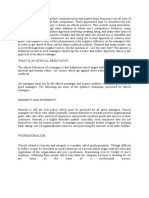0% found this document useful (0 votes)
8 views5 pagesProceedings
This conference paper examines the influence of national culture on the performance of microfinance institutions (MFIs), highlighting the relationship between cultural dimensions and both financial and social outcomes. It reviews existing literature that suggests cultural factors significantly impact microfinance success, yet this area remains under-researched. The study emphasizes the need for further exploration of how cultural contexts shape microfinance performance across different countries.
Uploaded by
Tesfaye EressoCopyright
© © All Rights Reserved
We take content rights seriously. If you suspect this is your content, claim it here.
Available Formats
Download as PDF, TXT or read online on Scribd
0% found this document useful (0 votes)
8 views5 pagesProceedings
This conference paper examines the influence of national culture on the performance of microfinance institutions (MFIs), highlighting the relationship between cultural dimensions and both financial and social outcomes. It reviews existing literature that suggests cultural factors significantly impact microfinance success, yet this area remains under-researched. The study emphasizes the need for further exploration of how cultural contexts shape microfinance performance across different countries.
Uploaded by
Tesfaye EressoCopyright
© © All Rights Reserved
We take content rights seriously. If you suspect this is your content, claim it here.
Available Formats
Download as PDF, TXT or read online on Scribd
/ 5








































































































